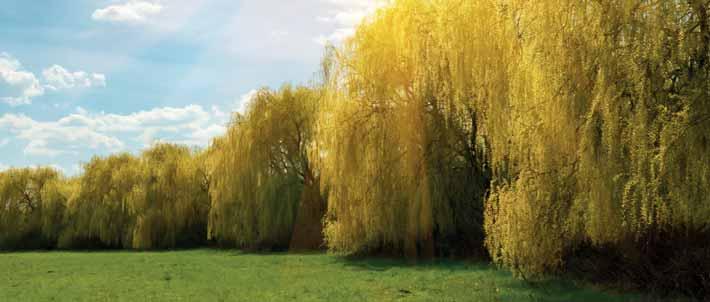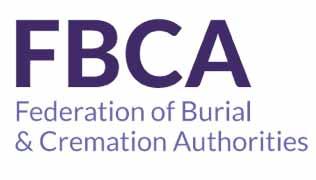
13 minute read
Burial and Cremation - The Environmental Questions
Brendan Day – Secretary and Executive Officer
The most profound changes to the disposal of the dead for over a millennium took place in the second half of the 19th century. Its figurehead, Dr Price, is recognised ‘as one of the most significant figures of 19th-century Wales, and one of the most unusual in Victorian Britain’1 .
Advertisement
The greatest environmental issue facing Victorian society was the appalling sanitary conditions of the growing towns and cities, including the disposal of the dead.
The industrial revolution had resulted in the rapid and exponential growth of existing towns and cities as people were drawn from the rural environment to take the new better paid factory jobs. However, the existing churchyards could not cope with the rapid increase in the number of interments from the growing population and as a result ‘British burial grounds had become a site of national crisis’2 .
Several parliamentary commissions reviewed the situation, and the Burial Acts followed in the 1860’s enabling the formation of local ‘Burial Boards’ to open modern cemeteries to supplement and ultimately replace the traditional churchyards.
In addition, with their slogan ‘save the land for the living’ the Cremation Society was formed in 1874 to campaign for cremation as a hygienic alternative to burial. When Dr William Price attempted to cremate the body of his son, the resulting trial at Cardiff in February 1884 found that cremation was lawful providing no nuisance was caused in the process to others.

This was the opportunity the Cremation Society required to establish itself as the ‘pioneer of cremation in Great Britain’, building and operating the very first crematorium for public use, in 1885 in Woking, Surrey.’3
By the time of the introduction of the first Cremation Act in 1902 the revolutionary shift from churchyards to local authority cemeteries and crematoria was well under away and 100 years later in 2002 71.9%4 of the dead would be cremated.
The necessary change had been achieved despite significant opposition from a number of stakeholders through adapting existing practices, taking the limited churchyard model and developing it into a network of municipal cemeteries, and adopting the new disruptive technology of cremation.
British burial grounds are no longer the national crisis they were. However, like the rest of society, they and crematoria face a new challenge, a crisis which also demands vision, change and if necessary, the adoption of disruptive technologies. That crises is the climate crisis; namely the impact cemeteries and crematoria have on the environment, their contribution to climate change and ultimately how they can form part of the solution.
Environmentally and ecologically, neither of these options are sustainable in the long term5
Cemeteries and crematoria – the challenge
Federation members, as owners of crematoria and cemeteries across the UK, are the stewards of thousands of acres of land. Much of it mature green landscapes situated within urban conurbations providing potentially valuable ecological habitats.
For over 150 years they have been managed in a manner which has brought continuing benefits to the bereaved. Transforming the delivery of a vital service through the introduction of new technologies, processes, and practices to raise standards, modernise service delivery and provide efficiencies.
However, in recent years we have become increasingly aware of the unintended consequences of some of these policies and the negative impacts they are having on the environment, as illustrated by the following examples:
Cremation
Cremation is the dominant means of disposal in the UK with 472,302 cremations taking place in 20196. The introduction of this means of disposal has delivered exactly what the early members of the Cremation Society called for, it has ‘saved the land for the living’. Unquestionably it has prevented 1,000s of acres across the UK from having to be turned over to cemetery development. In addition, we have seen the technology advance from rudimentary cremators fuelled by coke emitting smoke to advanced computer operated machines operating on gas and controlled in a manner to reduce harmful emissions.
However, we are now aware of the damage caused by using fossil fuels producing CO2 and the need to reduce/prevent the generation of this greenhouse gas. CO2 being produced by the cremation process cannot be overlooked and needs to be reduced.
There are potential solutions available, from adapting the current process to use different fuels such as hydrogen or electricity to possibly new technologies including Alkaline Hydrolysis, Cryomation and composting.
Coffin construction
In the 19th century many people were buried in wool or linen shrouds or coffins of rough sawn timber, unable to afford the solid oak, varnished coffin replete with brass handles and hand made by individual funeral directors. The growth of the centralised coffin construction industry has seen the development and introduction of coffins made from chipboard with a wide variety of veneers. These developments have made coffins available to everyone and their excellent finish makes it difficult to tell them apart from their much more expensive solid wood counterparts. Furthermore, in using chipboard they are using a by-product of the timber/forestry industry which would otherwise go to waste.
However, we are now starting to recognise issues associated with the use of chipboard and the problems cause by the binding agent used in its construction, Formaldehyde.
‘The CDS Group environmental services undertake groundwater testing and pollutant risk modelling of cemeteries pre and post development in accordance with EA regulations. Formaldehyde is appearing in groundwater samples downstream of cemeteries.
This is likely to be coming from two sources: firstly embalming, but also from resin composition used in chipboard coffins.
‘Formaldehyde is highly toxic, a class 1 carcinogen, harmful and persistent to aquatic wildlife and can cause genetic defects. The permissible limit of formaldehyde in groundwater is zero!
In a one acre cemetery we deposit up to 198kg of formaldehyde from embalming, this does not include the formaldehyde in chipboard coffins.?? and in the cremation process it contributes to the production of NOX, an extremely polluting greenhouse gas.’7
There are possible solutions which include adapting the current chipboard construction process to remove formaldehyde and replace it with a different bonding agent. Alternatively, more radical solutions could include the wider use of greener materials for coffins such as wicker, enviboard or a return to wooden coffins made from trees grown in the UK. The use of formaldehyde in embalming should be replaced with a rapidly biodegrading substitute, or simply not used.
Memorials
Prior to the 19th century churchyard memorials were predominantly wooden crosses with only the wealthiest being able to afford an actual ‘head stone’. The Victorian municipal cemeteries witnessed the proliferation of stone memorials, local quarries producing slate, natural stone and granites all being used by local memorial masons. Stone memorials became available to everyone, even in crematoria where the desire of the bereaved to mark a final resting place could be catered for.
To meet this demand the memorial wholesalers now source their stone, predominantly granite, from sources thousands of miles away from the UK including China and India. The shipping of this material produces significant amounts of CO2 pollution. Furthermore, quarrying is damaging to the environment and the resulting highly polished granite memorials support little if any biodiversity, unlike natural stones which encourage lichens.
Again, there are solutions, a return to the use of locally quarried stone. Alternatively, more drastic solutions could be adopted, replacing stone with modern materials or traditional ones such as wood – carved oak memorials or recyclable metal plaques. One of the largest sources of stone in the UK is of course existing cemeteries, whose management includes the disposal and destruction of vast numbers of granite memorials, which could be refurbished and reused.
Grounds Maintenance
In both cemeteries and crematoria, high standards of maintenance, including formal grounds mimicking the civic style perfected by council Parks Departments up and down the land, became the norm in the late 19th and 20th centuries. However, this model is extremely labour intensive, produces large quantities of carbon and positively discourages biodiversity.
‘It was 1961 and I was a horticultural trainee. Grounds maintenance was in the midst of a revolution; cheap herbicides and rotary mowers meant that we could dismiss the scythers at Shrewsbury Cemetery and tidy up the Victorian section.
It took a mere couple of years to destroy the wildflowers, together with the voles, butterflies and then the barn owl. This tidiness mantra was happening all over the UK and we have yet to recover from the impact’.8
The solution is for cemetery and crematorium grounds to include a range of landscapes including formal grounds, maintained using electric rather than petrol/diesel fuelled mowers, along with areas which will ‘welcome wildlife’ and support biodiversity.
These are examples of challenges which are currently facing Federation members as the stewards of UK cemeteries and crematoria. Change, if it is going to take place, will need to be delivered in a sustainable manner, involving evolution not revolution - and taking the public and bereaved with them. Change will need to be in a manner which will support the green economy and release the ‘Green Capital’ held in areas such as UK forests and quarries which could support the changes necessary to deliver greener coffins and memorials.
Change Drivers
Just as in the 19th century, for meaningful change to be achieved, the current stakeholder industries, Cremation/ Burial Authorities, funeral directors, memorial masons and coffin manufactures, will need to make significant changes to how they currently operate and their offer to the public. Whilst climate change and environmental issues are without doubt the agenda item, there are constraints to meaningful change, for example cost and business imperatives, natural inertia and knowing where to commence! So is change likely to happen?
There are three key drivers which are likely to make change inevitable, even if the sector chooses not to embrace the new agenda.
1.Statutory changes
Politicians are under ever increasing pressure from their constituents to legislate to limit harmful impacts on the environment. The start of this process can be traced back to the publication of ‘This Common Inheritance: Britain's Environmental Strategy: A Summary of The White Paper On The Environment’9. The resulting Environmental Protection Act 1990 regulated a wide range of services for the first time, including cremation. To control a range of harmful emissions, the sector was required to replace the old ‘Push Button Operated’ cremators with ones controlled by computers, attached to abatement plant and monitoring equipment of a complexity never seen before. It is extremely unlikely that without the legislative ‘nudge’, the sector would have gone this far.
There has been an increasing amount of legislation relating to the environment, the Climate Change Act 2008 and most recently legislation requiring the government to reduce the UK’s net emissions of greenhouse gases by 100% relative to 1990 levels by 205010.
The Committee on Climate Change reported in 2012 that ‘Local authorities are well placed to drive and influence emissions reductions in their wider areas through the services they deliver, their role as social landlords, trusted community leaders and major employers, and their regulatory and strategic functions.’11
Cheshire East’s cabinet held their first ‘virtual’ online meeting where members agreed the council’s first carbon neutral action plan.
‘The action plan focusses on the initial actions that Cheshire East Council will take to not only deliver the 2025 target, but also how the council will encourage all businesses, residents and organisations to reduce emissions.
Councillor Nick Mannion, Cheshire East Council cabinet member for environment and regeneration, said: “In May 2019, the council noted the UK declaration of a climate emergency and committed to being carbon neutral by 2025’12 .
As the majority of crematoria are operated by local authorities, (63%13) it is likely increasing pressure will be brought to bear on the sector to satisfy both national and local political imperatives, in addition to the next driver – public opinion.
Public opinion
It is apparent that public opinion is now more aware of environmental issues than ever. Phrases such as ‘climate change’ and ‘climate and nature emergency’ are part of everyday language, the public have to separate their waste for recycling and in watching weather forecasts we hear reports of the ‘hottest’, ‘wettest’ and ‘driest’ day/month/ year since records began.
The BBC series ‘Blue Planet II” hosted by David Attenborough is recognised as a defining moment in the shaping of public opinion and the environment. ‘Nearly nine in 10 people (88%) who saw that episode of BBC’s Blue Planet II about the effect of plastics on our oceans have changed their behaviour since. Sixty percent of us now choose a refillable water bottle and coffee cup more than we did, and Waitrose has seen an 800% increase in questions about plastics from customers.’14
The public are now actively seeking out green alternatives and where the public go, investment follows!
Investment
Increasingly, investment in the cemetery and crematorium sectors, in common with most industries, is linked to the green agenda.
UBS Wealth Management with $2.3 trillion invested worldwide defines sustainable investing as:
‘Sustainable investing takes into account the environmental, social and governmental challenges our world faces. For instance, this could relate to the overuse of natural resources, rising levels of pollution or the effects of increasing urbanization’.15
Darwin Alternative Investments state that for their investments we ‘take into consideration their environmental impact and we focus on enhancing the natural landscape, protecting the ecology and building in a sustainable manner at every location.’16
Within the sector the Crematorium and Memorial Group state ‘We recognise the impact of our operations on local surroundings and are committed to maintaining the quality of the environment in which we all live by operating in accordance with our environmental policy’.17
Westerleigh Group state that it ‘is committed to maintaining the highest levels of environmental protection across its crematoria and cemetery operations. New crematoria must be designed to conserve energy, to prevent pollution and to limit the impact of the building and the eventual operations on the surrounding environment.’18
A new entrant to the market the Faunus Group state that 'The Faunus Group is a green initiative formulated by a collection of like minded professionals.
We specialise in producing environmentally beneficial, socially responsible projects and developing green industry.
Formed as a vehicle for our first venture, The Woodland Burial Co, the group has developed into a sounding post and spring board for developing new and exciting green businesses and ventures. Conservation stands a better chance if there is a profit in it. The greater the profit, the greater the good you will do.’19 In the funeral sector another new entrant Neo Cremation state that they provide ‘Direct cremations that focus on the essentials. We make it easy to arrange an unattended direct cremation for a fixed all-inclusive fee of £1,295. Choose our sustainable and eco-friendly alternative and make a lasting impact.’20
Facing the key green drivers of legislation, public opinion and investment linked to the environment, can burial and cremation authorities continue to act in a manner which is not in keeping with their role of stewards of the land and facilities they manage?
The overwhelming evidence suggests that the answer is no. Furthermore, we have known this for some years. Legislatively, the Environmental Protection Act indicated the path of travel 30 years ago; operationally, pioneers including Ken West introduced the first woodland burial site in 199321; cardboard and wicker coffins were introduced decades ago as more environmentally friendly alternatives to chipboard coffins; and rather than have ashes at crematoria with a memorial 79%22 of families now take the cremated remains away to more meaningful locations.
In view of the recognised challenges facing the sector and the key drivers making change almost inevitable, how should the Federation, representing the owners and stewards of crematoria and cemeteries across the UK, respond?
References
1Wikipedia 2G A Walker Gatherings from Grave Yards published 1839 3The Cremation Society website. 4The Cremation Society Annual Statistics 5Cryomation webpage 6The Cremation Society Annual Statistics 7Cemetery Development Services LinkedIn post. 8Ken West OBE The Ecologist, 14th January 2019 9This Common Inheritance: Britain's Environmental
Strategy: A Summary Of The White Paper On The
Environment. HMSO 1990 10Climate Change Act 2008 (2050 Target Amendment)
Order 2019 11How local authorities can reduce emissions and manage climate risks 2012 HMSO 12Cheshire East Media Hub 5th May 2020 13The Cremation Society, Annual Directory of Crematoria 14 The Waitrose & Partners Food & Drink Report 2018-19 15UBS Wealth Management Website 16Darwin Alternative Investments website 17The Crematorium and Memorial Group website 18Westerleigh group website 19Faunus Group website 20Neo cremations website 21Ken West OBE The Ecologist, 14th January 2019 22Cremation Society Statistics








